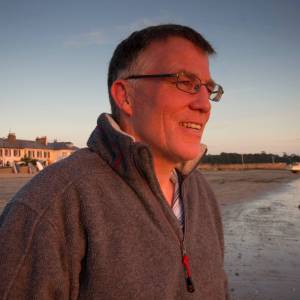Dana Awartani - I went away and forgot you.
Amazing and thought provoking exhibit at the Arnolfini.
This summer Arnolfini presents multidisciplinary artist Dana Awartani’s first institutional European solo exhibition. Standing by the ruins brings together existing works with a major new commission in a moving exploration of love and loss, destruction and the passage of time.
Awartani – a Palestinian-Saudi artist – addresses the physical loss of cultural heritage through the lens of abandoned, destroyed and vanishing places. Working across painting, installation, textiles, performance and film, she draws attention to both the human act of making and human loss, reflecting upon the ravages of conflict within the Middle East and architectural modernisation ingrained with colonial legacy.
Named after an ongoing series of floor installations and paintings, the exhibition presents three key moments: remembrance, healing and forgetting. Each work suggests a shifting relationship with the present and simultaneously with what is absent, rooted within a practice which Awartani describes as being as much about the story of how it is made as the finished work. Throughout, she honours traditional craft techniques – from darning to adobe building methods – working with skilled artisans and using locally sourced materials in work steeped in historical and visual references from Islamic and Arab art-making traditions.
The exhibition features key works including Come, let me heal your wounds. Let me mend your broken bones (2024), commissioned for the 2024 Venice Biennale, alongside the new commission Standing by the Ruins III (2025). This latest work, created with a collective of craftsmen from Riyadh who specialise in adobe earth restoration, rebuilds the intricate Ottoman-influenced floor design of Gaza’s Hamam al-Sammara – once among the region’s oldest bathhouses, now believed to have been destroyed by the ongoing bombardment of Gaza by the Israeli military.
Following traditional architecture made using adobe building techniques found in hot climates across various cultures, Awartani deliberately omits the final binding agent, imbuing the work with both strength and fragility. Alongside this floor-based installation, she presents variations of these geometric patterns in paintings on handmade cotton rag paper from Jaipur, going beyond the physical installation to reimagine what has been lost – remembering through rebuilding.
Time flows throughout Awartani’s practice, from techniques passed down ancestrally to crafts dependent on nature’s cycles, with sun-dried clay earth bricks and seasonally harvested natural dyes. Her training at The Prince’s School of Traditional Arts, London, an apprenticeship in Manuscript Illumination in Istanbul, and a fine art degree from Central Saint Martins have guided her approach, creating work that speaks across cultural and geographical boundaries.
Awartani’s powerful textile works offer perhaps the most compelling symbol of healing. Let me mend your broken bones (2017-) and the large-scale Come, let me heal your wounds. Let me mend your broken bones (2024) combine traditional darning with ancient medicinal Ayurvedic dyeing techniques. These darned maps derive from detailed research and photographic evidence of destroyed architecture, monuments and cultural sites across Iraq, Syria, Palestine and beyond, documenting sites damaged during conflicts since the Arab Spring of 2010. Each tear in the fabric marks a different site of destruction which is then carefully mended by a master darner from India – these repeated acts of researching, recording, mapping, damaging and healing offer their own form of catharsis.
The exhibition also features the meditative I Went Away and Forgot You. A While Ago I Remembered. I Remembered I’d Forgotten You. I Was Dreaming (2017) – a film and sand installation exploring cultural erasure in Jeddah’s old quarter. Shot in one take in what is now a recognised UNESCO heritage site, we watch as Awartani slowly sweeps away a colourful geometric pattern, grain by grain, whilst the physical installation lies at visitors’ feet, creating an unsettling sense of time disrupted.
- 3
- 0
- Fujifilm X100VI
- 1/60
- f/2.0
- 23mm
- 200

Comments
Sign in or get an account to comment.


